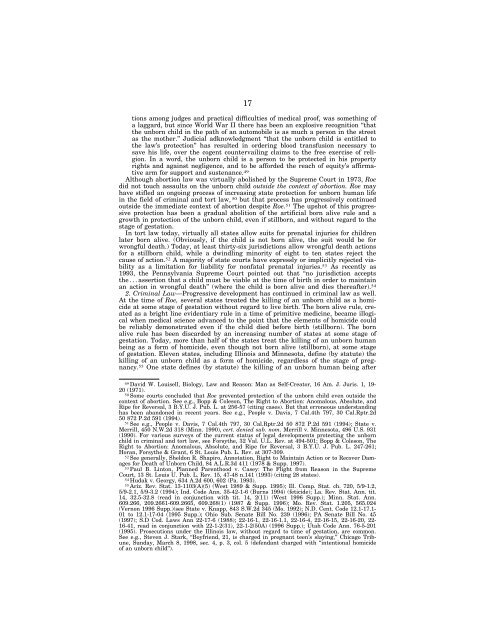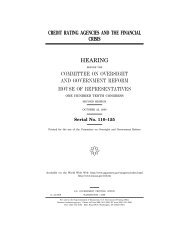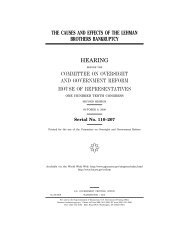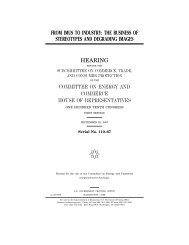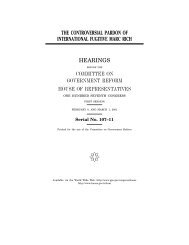16a want of capacity to live were actually proved, this would not render the partydestroying it irresponsible for the offense. 43In American law, viability first began as a judicially-imposed gloss on the law,with Oliver Wendell Holmes’ 1884 opinion in Dietrich v. Inhabitants of Northampton44 for the Massachusetts Supreme Judicial Court. Dietrich denied recoveryfor the death of a child born alive but premature from a miscarriage and createda viability requirement for civil recovery that had no basis in statute or commonlaw. 45As the ‘‘dean of torts,’’ William Prosser made clear, some American courts followedDietrich for about 50 years, but with developing medical knowledge in the 20th centuryand the 1946 decision in Bonbrest v. Kotz, 65 F.Supp. 138 (D.D.C. 1946), Americanscourts increasingly rejected the viability rule until the Supreme Court’s decisionin 1973 in Roe v. Wade placed such great emphasis on viability. Relying on Roe,some state courts limited legal protection for the unborn to viability. More recently,other courts have recognized that Roe—and its emphasis on viability—does notapply outside abortion law.F. Modern Criminal and Tort Law Developments1. Tort Law—Until modern scientific advances allowed greater knowledge ofhuman life in utero, abortion law was the primary—but not exclusive—legal fieldfor the protection of unborn human life. Until nearly the 20th century, homicide andabortion law proceeded on two different, evidentiary tracks based on location of thechild—homicide law applied to human beings outside the womb, abortion law appliedto human beings inside the womb.Dean Prosser explained both the evidentiary reasons for the born alive rule in tortlaw and the advancements in medical science that eliminated its rationale:When a pregnant woman is injured, and as a result the child subsequentlyborn suffers deformity or some other injury, nearly all of the decisions prior to1946 denied recovery to the child. Two reasons usually were given: First, thatthe defendant could owe no duty of conduct to a person who was not in existenceat the time of his action; and second, that the difficulty of proving anycausal connection between negligence and damage was too great, and there wastoo much danger of fictitious claims.So far as duty is concerned, if existence at the time is necessary, medical authorityhas recognized long since that the child is in existence from the momentof conception, and for many purposes its existence is recognized by the law ...Sofar as causation is concerned, there will certainly be cases in which there aredifficulties of proof, but they are no more frequent, and the difficulties are nogreater, than as to many other medical problems. All writers who have discussedthe problem have joined in condemning the old rule, in maintaining thatthe unborn child in the path of an automobile is as much a person in the streetas the mother, and in urging that recovery should be allowed upon properproof. 46The Court in Roe cited Prosser to support its erroneous description that courts hadgranted recovery for prenatal injuries only where the fetus was viable or at least‘‘quick.’’ 47 But Prosser stated just the opposite, pointing out that, in fact, moststates permitted recovery for prenatal injuries regardless of the stage of gestationin which the injuries are inflicted:Most of the cases allowing recovery have involved a fetus which was then viable...Manyof them have said, by way of dictum, that recovery must be limitedto such cases, and two or three have said that the child, if not viable, must atleast be ‘‘quick.’’ But when actually faced with the issue for decision, almost allof the jurisdictions have allowed recovery even though the injury occurred duringthe early weeks of pregnancy, when the child was neither viable nor quick. 48As Professor David Louisell summarized the law two years before Roe:[T]he progress of the law in recognition of the fetus as a human person hasbeen strong and steady and roughly proportional to the growth of knowledge ofbiology and embryology. For centuries the law of property has recognized theunborn as living persons and the criminal law, although unevenly, has accordedthem substantial protection. The law of torts, because of biological misconcep-43 A. Taylor, Medical Jurisprudence 413 (7th ed. 1861).44 138 Mass. 14, 16 (1884).45 See generally, Clarke D. Forsythe, The Legacy of Oliver Wendell Holmes, 69 U. Det. MercyL. Rev. 677, 685-89 (1992).46 William Prosser, Law of Torts 335-36 (4th ed. 1971) (emphasis added); Prosser & Keetonon Torts 367-72 (5th ed. 1984); Prosser Wade & Schwartz, Torts 421-36 (9th ed. 1994).47 410 U.S. at 161 162.48 Prosser, Law of Torts, at 337 (4th ed. 1971) (emphasis added).VerDate 11-MAY-2000 07:46 May 24, 2001 Jkt 000000 PO 00000 Frm 00020 Fmt 6633 Sfmt 6621 71495.TXT HCOM2 PsN: HCOM2
17tions among judges and practical difficulties of medical proof, was something ofa laggard, but since World War II there has been an explosive recognition ‘‘thatthe unborn child in the path of an automobile is as much a person in the streetas the mother.’’ Judicial adknowledgment ‘‘that the unborn child is entitled tothe law’s protection’’ has resulted in ordering blood transfusion necessary tosave his life, over the cogent countervailing claims to the free exercise of religion.In a word, the unborn child is a person to be protected in his propertyrights and against negligence, and to be afforded the reach of equity’s affirmativearm for support and sustenance. 49Although abortion law was virtually abolished by the Supreme Court in 1973, Roedid not touch assaults on the unborn child outside the context of abortion. Roe mayhave stifled an ongoing process of increasing state protection for unborn human lifein the field of criminal and tort law, 50 but that process has progressively continuedoutside the immediate context of abortion despite Roe. 51 The upshot of this progressiveprotection has been a gradual abolition of the artificial born alive rule and agrowth in protection of the unborn child, even if stillborn, and without regard to thestage of gestation.In tort law today, virtually all states allow suits for prenatal injuries for childrenlater born alive. (Obviously, if the child is not born alive, the suit would be forwrongful death.) Today, at least thirty-six jurisdictions allow wrongful death actionsfor a stillborn child, while a dwindling minority of eight to ten states reject thecause of action. 52 A majority of state courts have expressly or implicitly rejected viabilityas a limitation for liability for nonfatal prenatal injuries. 53 As recently as1993, the Pennsylvania Supreme Court pointed out that ‘‘no jurisdiction acceptsthe...assertion that a child must be viable at the time of birth in order to maintainan action in wrongful death’’ (where the child is born alive and dies thereafter). 542. Criminal Law—Progressive development has continued in criminal law as well.At the time of Roe, several states treated the killing of an unborn child as a homicideat some stage of gestation without regard to live birth. The born alive rule, createdas a bright line evidentiary rule in a time of primitive medicine, became illogicalwhen medical science advanced to the point that the elements of homicide couldbe reliably demonstrated even if the child died before birth (stillborn). The bornalive rule has been discarded by an increasing number of states at some stage ofgestation. Today, more than half of the states treat the killing of an unborn humanbeing as a form of homicide, even though not born alive (stillborn), at some stageof gestation. Eleven states, including Illinois and Minnesota, define (by statute) thekilling of an unborn child as a form of homicide, regardless of the stage of pregnancy.55 One state defines (by statute) the killing of an unborn human being after49 David W. Louisell, Biology, Law and Reason: Man as Self-Creator, 16 Am. J. Juris. 1, 19-20 (1971).50 Some courts concluded that Roe prevented protection of the unborn child even outside thecontext of abortion. See e.g., Bopp & Coleson, The Right to Abortion: Anomalous, Absolute, andRipe for Reversal, 3 B.Y.U. J. Pub. L. at 256-57 (citing cases). But that erroneous understandinghas been abandoned in recent years. See e.g., People v. Davis, 7 Cal.4th 797, 30 Cal.Rptr.2d50 872 P.2d 591 (1994).51 See e.g., People v. Davis, 7 Cal.4th 797, 30 Cal.Rptr.2d 50 872 P.2d 591 (1994); State v.Merrill, 450 N.W.2d 318 (Minn. 1990), cert. denied sub. nom. Merrill v. Minnesota, 496 U.S. 931(1990). For various surveys of the current status of legal developments protecting the unbornchild in criminal and tort law, see Forsythe, 32 Val. U.L. Rev. at 494-501; Bopp & Coleson, TheRight to Abortion: Anomalous, Absolute, and Ripe for Reversal, 3 B.Y.U. J. Pub. L. 247-261;Horan, Forsythe & Grant, 6 St. Louis Pub. L. Rev. at 307-309.52 See generally, Sheldon R. Shapiro, Annotation, Right to Maintain Action or to Recover Damagesfor Death of Unborn Child, 84 A.L.R.3d 411 (1978 & Supp. 1997).53 Paul B. Linton, Planned Parenthood v. Casey: The Flight from Reason in the SupremeCourt, 13 St. Louis U. Pub. L. Rev. 15, 47-48 n.141 (1993) (citing 28 states).54 Hudak v. Georgy, 634 A.2d 600, 602 (Pa. 1993).55 Ariz. Rev. Stat. 13-1103(A)(5) (West 1989 & Supp. 1995); Ill. Comp. Stat. ch. 720, 5/9-1.2,5/9-2.1, 5/9-3.2 (1994); Ind. Code Ann. 35-42-1-6 (Burns 1994) (feticide); La. Rev. Stat. Ann. tit.14, 32.5-32.8 (read in conjunction with tit. 14, 2(11) (West 1996 Supp.); Minn. Stat. Ann.609.266, 209.2661-609.2665, 609.268(1) (1987 & Supp. 1996); Mo. Rev. Stat. 1.205, 565.024(Vernon 1996 Supp.)(see State v. Knapp, 843 S.W.2d 345 (Mo. 1992); N.D. Cent. Code 12.1-17.1-01 to 12.1-17-04 (1995 Supp.); Ohio Sub. Senate Bill No. 239 (1996); PA Senate Bill No. 45(1997); S.D Cod. Laws Ann 22-17-6 (1988); 22-16-1, 22-16-1.1, 22-16-4, 22-16-15, 22-16-20, 22-16-41, read in conjunction with 22-1-2(31), 22-1-2(50A) (1996 Supp.); Utah Code Ann. 76-5-201(1995). Prosecutions under the Illinois law, without regard to time of gestation, are common.See e.g., Steven J. Stark, ‘‘Boyfriend, 21, is charged in pregnant teen’s slaying,’’ Chicago Tribune,Sunday, March 8, 1998, sec. 4, p. 3, col. 5 (defendant charged with ‘‘intentional homicideof an unborn child’’).VerDate 11-MAY-2000 07:46 May 24, 2001 Jkt 000000 PO 00000 Frm 00021 Fmt 6633 Sfmt 6621 71495.TXT HCOM2 PsN: HCOM2
- Page 1 and 2: ISSUES RAISED BY HUMAN CLONING RESE
- Page 3 and 4: C O N T E N T SPageTestimony of:Boi
- Page 5 and 6: ISSUES RAISED BY HUMAN CLONINGRESEA
- Page 7 and 8: 3Would human cloning lessen the wor
- Page 9 and 10: 5Chairman TAUZIN. Thank you, Mr. Ch
- Page 11 and 12: 7and cell therapy and beta cell dev
- Page 13: 9safety and the moral condition of
- Page 17 and 18: 13seen in the common phrase, being
- Page 22 and 23: 18eight to ten weeks gestation as a
- Page 24 and 25: 20Washington v. Glucksberg ignores
- Page 26 and 27: 22tion decision. The father of ‘
- Page 28 and 29: 24been treated as ‘‘sui generis
- Page 30 and 31: 26Perhaps the three most compelling
- Page 32 and 33: 28are their genes. We know that chi
- Page 34 and 35: 30ago, Nobel Prize-winning biologis
- Page 36 and 37: 32Mr. JOHN. Thank you, Mr. Chairman
- Page 38 and 39: 34Mr. GREENWOOD. The Chair thanks t
- Page 40 and 41: 36to turn undifferentiated human pl
- Page 42 and 43: 38these issues have not yet even be
- Page 44 and 45: 40really have a clue what those gen
- Page 46 and 47: 42mately 150 days of gestation and
- Page 48 and 49: 44Hill JR, Winger QA, Long CR, Loon
- Page 50 and 51: 46clones will not change a bit by t
- Page 52 and 53: 48technologies, we’re able today
- Page 54 and 55: 50from the testes of infertile men
- Page 56 and 57: 52not be taken away from people, be
- Page 58 and 59: 54a result of this declaration, I w
- Page 60 and 61: 56Too much pressure, too many expec
- Page 62 and 63: 58requires some level of scientific
- Page 64 and 65: 60an abnormal person. So I think it
- Page 66 and 67: 62to the world, back to this earthl
- Page 68 and 69: 64which is not true for cow which i
- Page 70 and 71:
66Ms. BOISSELIER. University of Hou
- Page 72 and 73:
68Ms. BOISSELIER. Soon.Ms. DEGETTE.
- Page 74 and 75:
70Mr. ZAVOS. No, no. We believe tha
- Page 76 and 77:
72cloning process. And without that
- Page 78 and 79:
74have to look at the structure of
- Page 80 and 81:
76Mr. LARGENT. So the answer is no,
- Page 82 and 83:
78that very much and you are excuse
- Page 84 and 85:
80that people have incorrectly stat
- Page 86 and 87:
82My name is Dr. Thomas Murray. I
- Page 88 and 89:
84human subjects against irresponsi
- Page 90 and 91:
86might be born as a result of this
- Page 92 and 93:
88ever, it is not unusual for the g
- Page 94 and 95:
90Mr. DEUTSCH. Because there really
- Page 96 and 97:
92Ms. ZOON. When we found out about
- Page 98 and 99:
94Mr. GREENWOOD. The time of the ge
- Page 100 and 101:
96Be that as it may I think there a
- Page 102 and 103:
98There has been progress in the cl
- Page 104 and 105:
100may find that it is a terrible e
- Page 106 and 107:
102entists tried to get this ban ov
- Page 108 and 109:
104lies in our hands. And we face a
- Page 110 and 111:
106clude Ireland, Israel, Italy, Fr
- Page 112 and 113:
108strict IVF and similar high-tech
- Page 114 and 115:
110while ‘‘clone then love’
- Page 116 and 117:
112What Cloning Is Not—The ‘‘
- Page 118 and 119:
114And the largest group of people
- Page 120 and 121:
116The last piece to the legal puzz
- Page 122 and 123:
118cloning law on both scientific f
- Page 124 and 125:
120mendous potential human safety r
- Page 126 and 127:
122age him to do this research and
- Page 128 and 129:
124I realize there have been calls
- Page 130 and 131:
126‘‘from which I have no assoc
- Page 132 and 133:
128TO HAVE CHILDREN,’’ I ask th
- Page 134 and 135:
130of ourselves as humans in our pr
- Page 136 and 137:
132Our Genetic Science Task Force c
- Page 138 and 139:
134But this was also true in occide
- Page 140 and 141:
136So we utilized good science to d
- Page 142 and 143:
138egg and so on. What you’re tal
- Page 144 and 145:
140Mr. DEUTSCH. I think that’s ac
- Page 146 and 147:
142and dad? We all did that when we
- Page 148 and 149:
144Food, Drug and Cosmetics Act or
- Page 150 and 151:
146Mister Chairman, the embryo may
- Page 152 and 153:
148The current low rate of cloning
- Page 154 and 155:
150TIME magazine’s pictorial, ‘
- Page 156 and 157:
152John A. Robertson, University of


